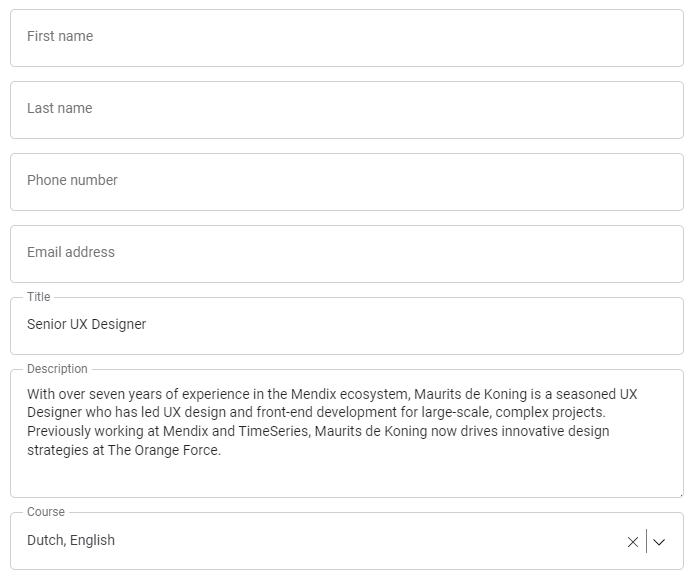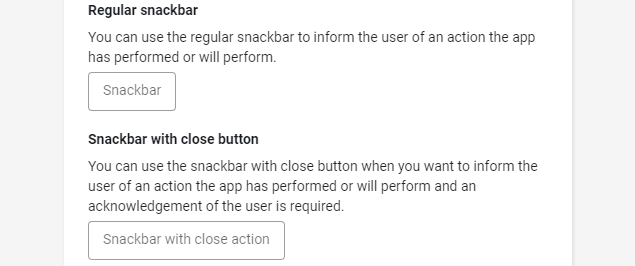Being a lazy UX Designer might not sound like a great selling point, right? Well, in this blog post, I’ll explain why laziness is a good thing that not only helps me out but, hopefully, helps other people out too.
Stuck on Repeat
Throughout my career, I’ve worked on numerous Mendix UX projects, ranging from simple dashboards to comprehensive UI design systems. Despite the diversity of these projects, they all shared a common factor: repetitive front-end development tasks. Styling inputs, adding animations, incorporating fonts, and aligning page elements were tasks that, although crucial, became monotonous over time.
Initially, I didn’t mind these repetitive tasks. However, as the projects piled up, the repetition became tiresome. I found myself bogged down and unmotivated, knowing I was capable of much more creative and impactful work. Something had to change, but what?
Turning Laziness into Something Else
This is where my so-called “laziness” came into play. Instead of slogging through the same tasks repeatedly, I asked myself: What if I could automate these processes? What if I could create reusable components to handle these mundane tasks, freeing up my time for the more engaging aspects of UX design? And thus, I started my journey in creating the solution for my laziness problem.

The Solution
So, what was my solution? Simple: I developed UI Modules for the most common tasks and shared them in the private Mendix marketplace. This allowed me to test them and gather feedback from colleagues. Eventually, I made these modules available for everyone in the Mendix Marketplace. Here’s a summary of these components:
- mInputs: Automatically converts your default Mendix inputs into beautiful Google Material Design inputs. Supports the new Combo Box widget and the use of CSS variables!
- mSnackbar: Offers a non-intrusive way to give feedback to users via a Snackbar (also known as a toast) Usage is very simple, just drag-and-drop the JavaScript option into your Nanoflow and configure things like the text, position, button action, and more. It’s that easy and even better; it is WCAG-compliant! (Thanks to Enexis for letting me create and share this.)
- mIcons: Gives you the option to use Material Icons throughout your application! You can choose between Filled, Outlined, Rounded and Sharp. I’ve converted the codepoints into searchable names to further improve your workflow!
- mDataGrids: This enables you to create sticky columns on the left or/and right side of a Data Grid, Data Grid 2, and Dynamic Data Grid! It also has many other options like sticky headers and setting the amount of text rows per data item.
- mFlex: Offers all Flex options within the Appearance tab, supporting containers, list views, and template grids without custom code.
- mGrid: Similar to mFlex, but for CSS Grid options.
- mFonts: Gives a wide range of Google font options without relying on Google API calls or custom code.
- mAnimations: Allows animation of containers, Listviews, Templategrids, Datagrids, and Datagrid2 widgets with controllable iterations and durations, all from the Appearance tab.
Each module includes its own variables stylesheet for easy customization, making it simple to adapt them to your project’s needs.

The Benefits
Using these modules has significantly improved my workflow on large-scale projects. By eliminating the repetitive tasks that once bogged me down, I’ve been able to focus on other, more critical aspects of my work. This shift has not only made my job more enjoyable but also more efficient, allowing me to invest my energy in the creative and fun parts of UX design.
The Catch (?)
So, what’s the catch? Surely, these can’t be free, right? Well, that’s the fun part—they are. I genuinely enjoy creating and sharing these tools with the Mendix community. These modules are still in active development, with new features added regularly. And since I’m only human, I welcome any feedback or bug reports to make these tools even better.
I hope these modules help you and your colleagues create awesome-looking applications more efficiently. Embrace a bit of “laziness”—it might just lead you to more innovative and productive ways of working!
Are you curious to learn more about how you can implement UX in business? Or do you want to know more about working with our UX/UI expert? Reach out to us at info@theorangeforce.com.

About the Author
With over seven years of experience in the Mendix ecosystem, Maurits de Koning is a seasoned UX Designer who has led UX design and front-end development for large-scale, complex projects. Previously working at Mendix, Maurits de Koning now drives innovative design strategies at The Orange Force.

